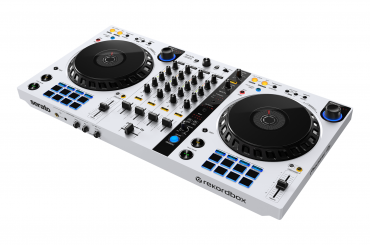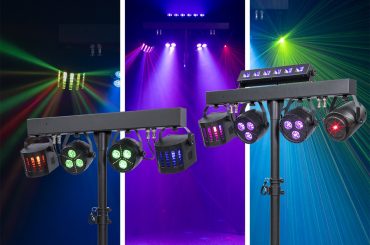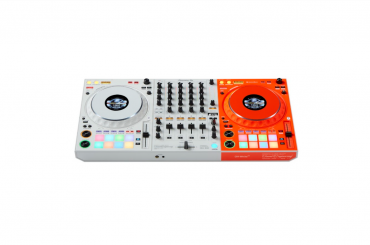The SubPac is a revolutionary new product fitting into an entirely new category of audio technology. Developed and manufactured by StudioFeed, a Los Angeles-based company self-described as a “social venture whose cause is to support independent music… and technology development,” the SubPac is a patent-pending innovation that has revolutionized the way we approach DJing, producing and listening to music.
Through proprietary transducer technology and vibrating, tactile polymers, the SubPac transfers low frequencies directly into a wearer’s body, providing a new physical dimension to experience music. StudioFeed simply calls this sensation “tactile bass.”
There are two SubPac models currently on the market: the smaller, wearable SubPac M1 Bluetooth and the flagship SubPac S2, which must be strapped into a chair. An earlier, wired input-only version of the M1 has been discontinued along with the original seatback SubPac S1. We tested out the S2 and M1 Bluetooth systems.
SubPac S2: The S2 shines in the studio. Instead of buying a drywall-rattling, space-hogging, earth-shaking subwoofer for a comparable or higher price than a SubPac, you can strap the S2 into your favorite chair, avoid ticking off your neighbors, and enjoy the added benefit of literally feeling the music you’re producing. Techno wizards Pig & Dan describe the S2 as such: “SubPac has taken monitoring to a whole new level altogether. You actually feel the separation in the low end instead of struggling to hear it! The music we make thrives on that feeling in a club environment and it’s by far the hardest thing to judge in most home studios. […] when you don’t use SubPac you feel somewhat stripped of that accuracy.”
To control the audio signal flow, both SubPac models feature 3.4mm audio input jack and output jacks, as well as a wireless Bluetooth 4.0 profile supporting high-quality audio streaming. After users have routed in the source audio via a cable or Bluetooth, they then plug headphones into the rectangular control box. While everything seemed to work perfectly well during my preliminary Bluetooth tests, I opted to not use the Bluetooth streaming feature, as I am wary of the accuracy of audio data sent “over the air.”
I began my tests by using a pair of Grado RS2i headphones, but after a few listening sessions I had to swap out my Grados for my Audio Technica ATH-M50s. The S2 generates a considerable amount of noise when it’s really cranked to higher settings, and that noise was bleeding into my open-back Grados. No need to worry too much about the noise bleed, though. A rep from StudioFeed tells me that the highest levels of intensity are intended for music that has a larger dynamic range, because bass is less prominent in those kinds of recordings. Most older recordings that haven’t fallen victim to the loudness wars will apply: classical, jazz, or old rock or funk recordings. For newer genres and productions, turning the sensitivity knob above halfway will most likely prove unnecessary, and therefore noise bleed is less of a concern.
Mixing with headphones is never an ideal situation, so after a few listening sessions I modified my setup so that the headphone output on my Apogee Duet sound card was feeding the SubPac’s 3.4mm input, with the Duet’s main outputs still routed to my studio monitors. This is the configuration that I’m sticking with. Even with low volume levels on my monitors, the SubPac is adjustable to still pack a punch. If you’re working on music late at night, you can always switch back to headphones instead of studio monitors.
Throughout the course of my review, I sat in the venerable Herman Miller Aeron chair, which I highly recommend for anyone who spends large stretches of time sitting down — producers, in particular. The SubPac S2 fit in the seat comfortably, though it did leave me sitting a few inches further forward than I was used to. With the Aeron’s ergonomic design feeling off-kilter, I found myself removing the S2 whenever I wasn’t producing or listening to music.
As far as the S2’s ergonomics, StudioFeed made several very key design updates to the original S1. Though it was possible to loop a strap around the arm of your chair to keep the S1 fixed in place, there was no way to secure the control box on your chair’s arm rest. To remedy this, StudioFeed has added an arm rest control box strapping. They also added a 3-point strapping system for the entire S2 unit because the S1 was prone to tilting back and forth in your chair.
Depending on how high you have the intensity level set, the SubPac pounding on your back can feel a bit like a massage following the first 15 to 20 minutes of usage. I found myself setting it at mid-range levels or lower when working on longer sessions, though I would crank the intensity up when showing off the SubPac to friends.
The SubPac S2 and the M1 Bluetooth both boast a six-hour-plus rechargeable lithium-ion battery life, though I found performance to be superior to that on the S2. I never once had the unit run out of juice completely, even after several short sessions spanning the course of a few weeks. I wasn’t able to use the M1 often enough to run down the battery — I felt awkward wearing it out in public — so it’s hard to gauge the validity of StudioFeed’s six-plus hour claim for that model.
SubPac M1 Bluetooth: Due to its wearable, compact form-factor, the primary uses that I envision for the SubPac M1 Bluetooth model include silent discos, causal listening while walking around or jogging, listening to promos on the road, and most importantly, in situations where a DJ is devoid of access to suitable booth monitors. Being able to feel exactly what clubbers in front of subwoofers feel is vital information for a DJ who’s not lucky enough to be in a booth equipped with Funktion-One monitors. Loco Dice is quoted on the SubPac website as saying that, “I can’t stress the importance of being able to feel the pressure of the music when I work in the club. The SubPac does exactly that while listening to music through my headphones.”
An added perk of the M1 comes for DJs who use in-ear monitors. I personally love the clarity of in-ears, but I feel disconnected from the room whenever I DJ while wearing them. I’m happy that as an owner of the M1 Bluetooth I can retire my over-the-ear DJ cans and switch back to the crisp sound quality of my JH-Audio in-ear monitors, while still being aware of what the room feels like via my SubPac M1.
Functionally speaking, the units are relatively similar, but aesthetically speaking, the M1 is far smaller than the S2. It takes up about half as much space as the S2, which is a good thing, because the S2 might make you look like Igor if you had to strap that thing onto your back to use it. While the S2 is somewhat egg-shaped, the M1 is structured like two hexagons stacked on top of each other, and uses more fabric materials than the S2. Additionally, the intensity levels are a bit lower on the M1, but that’s no real issue, as both of these units offer levels of intense tactile bass higher than I ever felt necessary.
Conclusions: I’m excited to see where this tactile, wearable audio trend takes us. The 2013 Kickstarter-funded Woojer serves as another example of a revolutionary audio device like the SubPac, which allows a user to literally feel the sounds they’re hearing. I also believe that there are greater implications for the deaf and hard-of-hearing, a group of customers typically ignored by the audio industry for obvious reasons. So for now, serious producers and DJs in sub-optimal performance situations should integrate this revolutionary device into their workflow.
Here’s to the future of tactile bass, as described by Richie Hawtin: “By introducing the physical dimension of sound, the SubPac creates a direct connection between the fan and the music in its purest form, allowing a deeper appreciation for the music we all love. […] there is a lot of sonic information in the lower frequency range, that make the SubPac a perfect listening accompaniment in order to fully appreciate the experience.”


![SubPac S2 & M1 Bluetooth: Tactile Bass for Studio & DJs [REVIEW]](https://www.djtimes.com/wp-content/uploads/2015/04/subpac.jpg)





